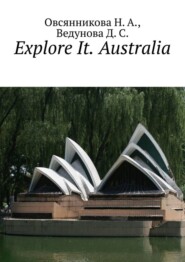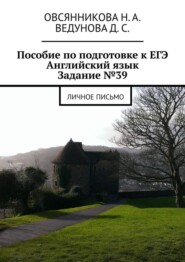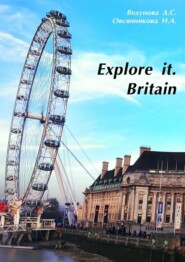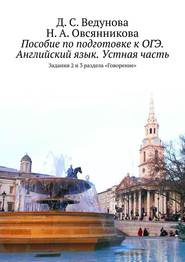По всем вопросам обращайтесь на: info@litportal.ru
(©) 2003-2024.
✖
Explore it. Britain. Part 2
Настройки чтения
Размер шрифта
Высота строк
Поля
• Lady Louise Windsor
• Princess Anne, the only daughter of Queen Elizabeth II and Prince Philip
• Prince Edward, Duke of Kent, the Queen’s cousin, and his wife Katharine, Duchess of Kent.
• Prince Michael of Kent, the Queen’s cousin, and his wife Marie Christine von Reibnitz, Princess Michael of Kent.
• Princess Alexandra, the Honorable Lady Ogilvy, a cousin of the Queen.
• Prince Richard, Duke of Gloucester, the Queen’s cousin, and his wife Birgitta, the Duchess of Gloucester.
UK Legal System
In accordance with the so-called hierarchical structure of the judicial system, there are two types of courts in England: the higher and lower, though they are served by judges of the three categories. The system of higher courts of England and Wales are not included on the adopted classification of the House of Lords and the Judicial Committee of the Privy Council, because of their exclusive position in relation to the courts of all the United Kingdom. After the British entry into the European Communities in the English literature of a new classification: the first in the court system called the European Court in Luxembourg.
House of Lords.
As the highest and final court House of Lords hears appeals against decisions of the courts of England and Wales, Scotland and Northern Ireland – in civil cases and sentences in criminal cases the courts of England, Wales and Northern Ireland. Of particular importance the House of Lords as the highest court is determined by the fact that its precedents are binding on all, without exception, the courts. Thus, the Chamber is now free to introduce new legal provisions for its decisions, which have the same effect as the norms established by the legislative acts.
Judicial Committee of the Privy Council is the supreme and final authority for vessels of all parts of the United Kingdom. The Committee is composed of the Lord Chancellor, the ordinary appeal Lords and a certain number of “secret advisers” appointed by the crown. As part of the Judicial Committee of the Privy Council of the Crown, its solutions are expressed in the form of “Council respectful” Her Majesty. They hear appeals against decisions of the superior courts “foreign” territories, and in respect of the territory of England – the decisions Queen’s Bench Division of the High Court in the so-called “prize” cases, the decisions of the ecclesiastical courts and certain disciplinary tribunals.
The Supreme Court of England and Wales.
So they called three independent higher court in England. The Court of Appeal, High Court and the Crown Court (since 1971). Their structure and jurisdiction are governed by the new law of 1981 of the Supreme Court.
The Court of Appeal in 1966 is divided into two branches: civil and criminal. President of the Court is the Lord Chancellor, but in reality, these functions are performed by Lord Keeper of the Rolls, who is also the chairman of the civil department. Act 1981 set the maximum number of Court of Appeal judges. There may be no more than 18. The judges of the court of appeal judges named Lord or simply lords-judges.
Since 1982, as directed by the Lord Privy judicial archives Donaldson, who succeeded the famous Judge Denning, allowed a quorum of two judges, and if they diverge in opinion, an appeal is transmitted to three judges.
The civil department sent an appeal to the High Court, county courts, Court of prohibited commercial practices, the court for the protection of the mentally ill interests Appeals Tribunal for Patents, the Land Tribunal and the Appeals Tribunal of the labor dispute.
Criminal Office was established in 1966 instead of the previous Criminal Court of Appeal. In this department receives appeals from the Crown Court sentences handed down after proceedings with participation of the jury, as well as to those sentences, which he pronounces on matters referred to it by magistrates’ courts to the stage of determining penalties. Criminal department does not consider the appeal against the acquittals.
The High Court is composed of three divisions: the Queen’s Bench, Chancery and the separation of the family court. Each of the branches has its own appeal presence, formed by at least two judges from office. Senior office or residence time in it presides. The High Court is composed of the Lord Chancellor, Lord – Chief Judge, chairman of the Department of the Family Court, the Vice-Chancellor and ordinary judges of this court, the number of no more than 80 people.
Establishing a higher high is made crown “Order in Council” approved by the Parliament. All ordinary judge of the High Court have equal rights, power and jurisdiction. In accordance with the specialization of judges are distributed according to the divisions, although the Lord Chancellor with the consent of the senior judge of the judges can transfer from one department to another, if it is required under high load.
Branch of the Family Court consists of a chairman and 16 ordinary judges, including two women. This fact emphasizes the British lawyers, since they are the only women in the composition of the higher courts of England. This department deals with complaints against decisions of the courts and county magistrates ‘courts for the guardianship of minors, on the orders of magistrates’ courts in cases of adoption, on the magistrates appellate decisions and judgments of the Court by the Crown disputes paternity.
Judges of the office as judges of all divisions of the High Court may be appointed only from candidates who for 10 years or more have the right to speak as advocates in the High Court, in all departments and in all cases. In other words, those lawyers who have a lawyer a certificate to do business in the High Court. In addition to these persons High Court judges are appointed by district judges with experience of at least two years.
Crown Court consists of 12 jurors. Jurors are elected at random, it may be any British citizen, aged 18 to 70 years. Jurors are elected every 2 weeks. He is the supreme criminal court of first instance, it is, at the same time plays the role of “average” for the appellate court magistrates. However, he considers the appeal not only against judgments and orders in criminal cases, but also the decisions and orders issued by magistrates in order of their limited civil jurisdiction (orders of adoption, licensing, etc.). Thus, the Crown Court carries out on behalf of the higher courts supervise the courts of global justice.
Lower courts
County courts. Currently, 90% of all civil cases considered in the county courts. Their jurisdiction is competing with the High Court, limited to the cost of the claim.
Magistrates courts. Like the county courts, they are the local courts. In England and Wales about 1,000 magistrates, who served 25 thousand magistrates who are not lawyers and do not get paid. They are paid only travel and subsistence expenses. On average, such a magistrate gives the work a day for two weeks. The Magistrate’s Court is limited to punishment in criminal cases. He could be sentenced to imprisonment for up to 6 months (with multiple offenses – to 12 months), and (or) a fine up to £ 5000.
Magistrates courts have limited civil jurisdiction in matters of guardianship, adoption, alimony and administrative functions for the issuance and cancellation of various licenses. Their main load – it is criminal cases summarily, ie without a jury. On average, they discussed about 2 million. Cases per year, accounting for 95% of all criminal cases. More than half of this amount relates to transport violations. Magistrates Courts also act as a specialized juvenile courts.
Special courts
Crown Court – appointed by the local authorities of barristers, solicitors and doctors with 5 – years of experience to investigate the accident that led to the death “mysterious” deaths, the cause of which is unknown or when there is suspicion of murder and infanticide, as well as identity reasons of suicide and death in prison.
Military courts, headed by a military court of Appeal.
Courts fleets.
Church courts.
Court for the banned trade practices and numerous administrative tribunals.
UK education system
UK education system has evolved over the centuries and is now subject to strict quality standards. Education in the UK is compulsory for all citizens between the ages of 5 to 16 years.
There are two sectors of education: public (free education) and private (fee-paying schools, private schools). In the UK there are two education systems that are easy to get along together, one in England, Wales and Northern Ireland, the second – in Scotland.
According to the OECD and UNESCO in 2012, the country had an enrollment of 3.5 million students, of whom 427,000 – foreign citizens. At the same time about 27 thousand British trained abroad.
There is a huge variety of schools in the UK. In various handbooks, online, magazine and newspaper articles of different criteria for the classification of schools can be used. A common type of school in the UK – a boarding school (Boarding School), where students are taught how, and live at the school. The first boarding schools appeared in Britain in the early Middle Ages, mainly in monasteries. In the XII century, Pope ordered all Benedictine monasteries open charity school at Catholic monasteries. Later fees in such schools began to take charge. Although aristocratic families preferred to convent school home schooling, eventually spread the belief that young people, regardless of social background useful to learn together with their peers. This belief became the basis for the organization and development of privileged boarding schools, among which there are those that nurture, educate and form the elite of modern British society for over a thousand years. In the list of the most expensive and prestigious schools in the world are present, and the British boarding schools.
Classification school-age students
full-cycle schools – where children are taught all ages from 3 to 18 years.
• Institutions of pre-school education – also called crèches and kindergartens for children from 2 to 7 years. There are taught to read, write, count, and develop through play. Typically, these schools are organized in collaboration with the schools for younger students. – Age of the students from 2 years 9 months to 4 years.
Institutions for younger students
• Primary schools – pupils from age 2 to 11 years. Exams SATs carried out in 2 phases, on the first and sixth years of study. The results of the second test are important for admission to Secondary School.
• Junior Schools – for children from 7 to 13 years. Here, children are special initial general training cycle on various subjects, which is completed by passing the exam Common Entrance Examination. Successful completion of the exam – this is a mandatory condition for admission to high school.
Institutions for older students
Senior Schools – for teenagers from 13 to 18 years. Here, children are first two-year training to pass the GCSE exams, followed by another two-year program: A-Level or International Baccalaureate.
• Secondary school – education for children under the age of 11 years.
• Grammar school – education for children between the ages of 11 years of profound program. In these schools can receive training to university (Sixth Form).
• the preparation of schools to universities (Sixth Form) – for older teens 16—18 years old.
The classification of schools by sex of students
• Mixed School – where jointly taught both boys and girls. There are many co-educational supporters argue their position the following statements:










